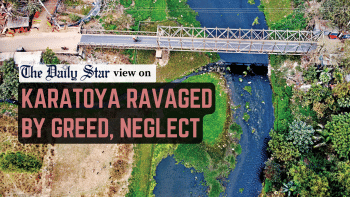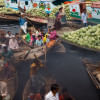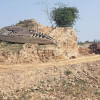No industrial zones at the cost of rivers

The Shitalakkhya River—once the lifeline of historic cities, vibrant industries, bustling trade routes, and a major source of food and livelihood of countless communities—is now on the verge of death. It's a disgrace that we are letting our rivers, the most important element of this land and the core identity of this nation, die one by one at the hands of encroachers and polluting factories.
A recent report by this daily paints a horrifying picture of the rapid and devastating deterioration of Shitalakkhya. Even five years ago, different species of fish, such as rui, katla, kalbaush, gutum, boal, puti, shrimp, shail, chapila and baira, were plentiful in the river, and fishermen could sustain their ancestral occupation. However, with the majority of 350 dyeing and washing factories and hundreds of RMG factories in Gazipur, and many more in Narsingdi, Narayanganj and Dhaka, polluting its 114 km stretch over time, there is not enough fish stock left in the water.
A study published last year found that all 56 rivers surveyed in the country were found extremely polluted. The major source and concentration of river pollution seems to be in urban and industrial areas. City and town authorities continue to dump wastewater directly into the rivers, and factories, even with ETPs, do not bother to process highly toxic pollutants before dumping them into water bodies. This information is nothing new, and outcries to save rivers like the Shitalakkhya have repeatedly fallen on deaf ears.
The National River Conservation Commission (NRCC) is severely understaffed, underfunded, and lacks significant executive power. There is no meaningful monitoring, strict enforcement of regulations, or a unified approach from different parts of the system—local district administration, NRCC, shipping, industries and environment ministries, and the like—to stop the cataclysmic destruction of our rivers and their ecological diversity. Unless the authorities understand the immense importance of river conservation and take decisive action, temporary drives to reclaim river lands or fining factories will remain mere eyewash, and our rivers will continue to die. We must demand answers to why our current approach to development costs rivers their vitality, ecological diversity, and natural course of flow.


 For all latest news, follow The Daily Star's Google News channel.
For all latest news, follow The Daily Star's Google News channel. 









Comments